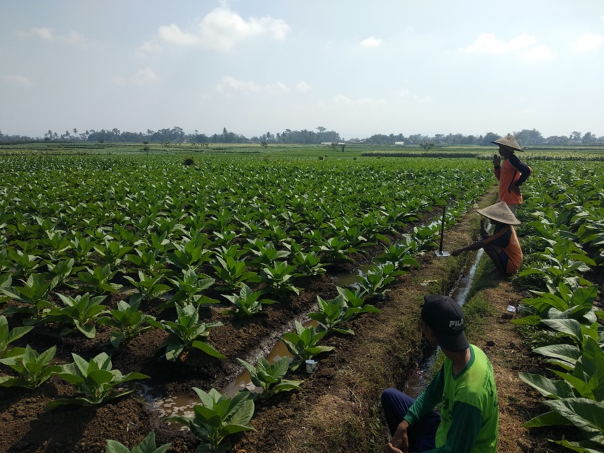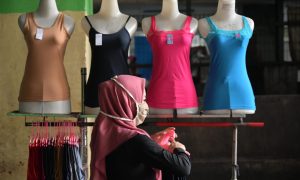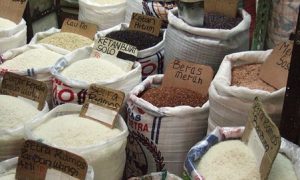“Town & Village”, the first two episodes of the podcast series ShareLoc, send me the location, have been released on Never Was Radio. In these two episodes Indonesians Galih and Raka engage in cross-generational conversation and walk us through different soundscapes. The first location is Batam, the well-known Indonesian industrial town, to which the two protagonists migrated and worked in electronics factories. Batam is perceived as a large industrial town, far from home, where you earn and live well. However in recent years, Batam has been deeply transformed by the global financial crisis, which has led many companies to relocate production and get rid of workers.
Part of Indonesia, Batam and nearby islands in the Riau Archipelago overlook the busy Strait of Malacca and are geographically closer to Singapore and Malaysia. They sit more than two hours by plane from the Indonesian capital Jakarta and the populous island of Java, but only twenty minutes by ferry from downtown Singapore and Johor Bahru, in Malaysia. It was precisely the geographical location of this region that has triggered a series of socio-economic transformations.
Occupying such a strategic spot along the trade route from East Asia to the Gulf and Europe, the area of Batam has been designated by the Indonesian government as a greenfield for industrial development since 1973. Indonesian bureaucrats of the New Order were motivated by the idea of creating an industrial outpost for Indonesia, a centre of excellence capable of competing with Singapore and Malaysia. From the early 1970s to the present day, with the alternation of different political seasons and governments, Batam and the Riau Islands have repeatedly changed their formal structure and purpose: a “free port” for hydrocarbons and goods, a centre of excellence for industrial research, a low-cost production platform based upon direct foreign investment, one of the targets of the Indonesia, Malaysia and Singapore growth triangle (a trans-national program aimed at enhancing prosperity and complementarity in the region) and finally, a Special Economic Zone.
Batam transformed the most in the late 1990s and 2000s. This interval also corresponds to the fall of totalitarianism in Indonesia, a period marked by vast social unrest, as well as massive global investment in the country. During those years, the government managed to convince many businesspeople, mostly Singaporean and Japanese, in some cases European, to move their electronics factories and their shipyards to Batam, assuring a complete package of industrial benefits: adequate infrastructure, low-cost workforce thanks to domestic migration from other parts of Indonesia, tax-holiday measures and administrative simplification. In the late 1990s, Batam became an industrial town with over a million inhabitants and one of the “global factories of the world”, smaller in scale but similar Hong Kong, to the point that many products exported all over the world, including fax machines, printers, microprocessors and even large ships were “Made in Batam”. Batam, as a rapidly expanding urban centre, was also complemented by a series of ancillary services: an articulated housing system, dormitories next to factories, apartments for rent, temporary housing, homes sold through mortgages (aimed at the thousands of workers and any relatives who joined them). More than that, a profitable entertainment industry, which included discos and brothels aimed primarily at Singaporean tourists, took off.
In the last decade, however, the industrial, urban and social systems of Batam gradually broke down. Today Batam is an underused, to some extent failed, industrial hub. Several factors have caused a deep and irreversible crisis. First, manufacturers have invested too little, or have done so too late, to refurbish their production lines, which often still feature technology dating back to the 1990s. Second, competition from other more modern and efficient state-supported industrial centres, such as those in Vietnam, has become increasingly unendurable. Third, bureaucracy has become more complex in Batam. With the decline of big industry, the town has also begun to stall; little by little, the factory workers and the nightclubs have disappeared. As for the latter, Singaporeans can now take low-cost flights to other destinations.
Today Batam is made up of an alternation of factories, shipyards and shopping centres that are completely abandoned and silent, with some workshops still running here and there, often owned by international industrial groups that have maintained a production niche in Batam and some staff, often outsourced. There has been a slight recovery in the tourism and real estate sector, essentially intended for Singaporean pensioners, to whom Batam can offer world-class services, luxury residences, golf courses, and medical assistance at a fraction of their cost in Singapore.
The second location featured in the podcast is a village that we will call Arjobembang, in the heart of rural Indonesia, in East Java, with several traditional but not archaic elements, where Galih and Raka sought refuge after losing their factory jobs and where they try to reinvent themselves as tobacco farmers, among many difficulties and little money.
A village in general, and Arjobembang in particular, is a place where work usually ends at sunset and people go to sleep relatively early; at night you can hear a pin drop, as opposed to the noise in Batam that goes (or once went) on all night long. Yet, the village is also an articulated, hyperconnected, and globalised environment, not at all backward. The village is home to the returning migrants, women and men who had left the village a few decades earlier to work as maids, waiters and bricklayers, and also technicians and factory workers, in Malaysia, Taiwan, Japan, South Korea, and often Batam. Even very young people, some of them in their early twenties, are generally very mobile: one of them, whom I met during my field trip, had just returned from Kalimantan, where he operated a bulldozer in a deforestation project. Another young man was taking classes to learn Korean and was planning to migrate to South Korea. A third, who had worked for a couple of years in Japan until his contract and visa expired, returned to the village and opened a ramen bar.
Different generations of villagers are often very cosmopolitan, either through direct experiences or the stories of fellow villagers. In many cases, they are also aware of the diverse job opportunities in the so-called New Economy: for instance, the use of social media to advertise and sell one’s products, and ride-hailing apps which seek freelance riders. People are similarly conscious of the drawbacks of modernity: job loss, precarious work, the climate crisis.

Recording the interviews on Raka’s porch
The village is not only connected to the rest of the world through long-distance migration routes. It is also communicating with the neighbouring region. It is no coincidence that the third location that Galih and Raka share is Malang, a medium-sized town in East Java, geographically close to the village but at the same time very different. Here, while they farm tobacco in Arjobembang, Galih and Raka try to make ends meet. The former sets money aside to open a traveling espresso bar and the latter is a freelance rider for a mobility app. In recent months, the pandemic has predictably turned the tables.
A closing note should be made about the relevance of “audio elements” and the importance of carrying out research “with audio”. The spread of photo and video sharing across Southeast Asia, as well as in Indonesia, has undoubtedly reinforced the centrality of visual elements in the communication and cognitive processes. However, from what I gathered in my field trips to Indonesia, people’s perception of the social and spatial transformation is not only visual and aesthetic but also auditory. It is therefore worth engaging with respondents in a fascinating exploration and participative recording of the several soundscapes that people are, or used to be, immersed in.
The “Town & Village” episodes convey two emblematic stories of people who live on the edge between different worlds, namely town and village. They also bespeak the ability to adapt to Indonesian (and global) socio-economic changes, the perception of forms of social, labor and environmental inequality, and the need to build a safe and stable future for themselves and their loved ones.
“Town & Village”, available in Italian and English, originated from a collaboration between Giacomo Tabacco, who conducted the original research in Indonesia, collected the stories of Galih and Raka, and conceived the project, and Paolo Righi, who edited and produced the episodes at Never Was Radio, an Italian community radio. The European Community’s project “Competing Regional Integrations in Southeast Asia” (CRISEA) funded the original research in Indonesia.
 Facebook
Facebook  Twitter
Twitter  Soundcloud
Soundcloud  Youtube
Youtube  Rss
Rss 


